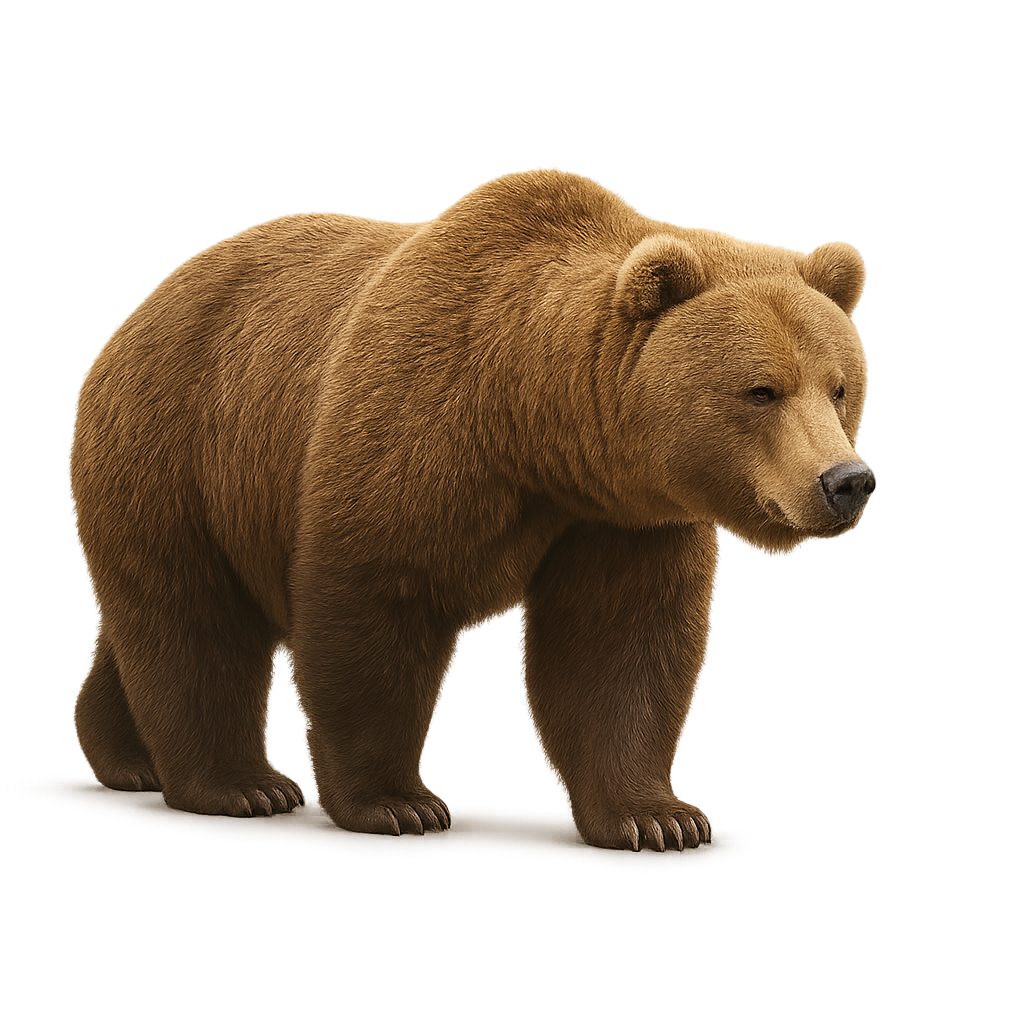Your wildlife photography guide.
Explore the brown bear in detail, study its behavior, prepare your shots.
Where to observe and photograph the brown bear in the wild
Learn where and when to spot the brown bear in the wild, how to identify the species based on distinctive features, and what natural environments it inhabits. The WildlifePhotographer app offers tailored photography tips that reflect the brown bear’s behavior, helping you capture better wildlife images. Explore the full species profile for key information including description, habitat, active periods, and approach techniques.
Brown bear
Scientific name: Ursus arctos

IUCN Status: Least Concern
Family: URSIDAE
Group: Mammals
Sensitivity to human approach: Shy
Minimum approach distance: 50 m
Rut period: May to July
Gestation: 180-270 jours
Births: January to February
Habitat:
Dense forests, mountains, and tundra
Activity period :
Activity varies depending on season, weather, or human pressure.
Identification and description:
The Brown Bear is one of the largest terrestrial carnivores, measuring between 1.5 and 2.5 meters in length and weighing between 100 and 800 kg, depending on the subspecies and habitat conditions. Its coat ranges from light brown to dark brown, and it is often denser during the winter. The Brown Bear primarily lives in forests, mountains, and Arctic regions, but can also be found in tundra and prairie areas. It is omnivorous, feeding on fruits, roots, small mammals, fish, and even carrion. The Brown Bear is also an excellent swimmer and climber. Due to hunting, habitat loss, and conflicts with humans, some subspecies of Brown Bears are threatened or endangered.
Recommended lens:
300 mm – adjust based on distance, desired framing (portrait or habitat), and approach conditions.
Photography tips:
Approach at a safe distance: The brown bear is a powerful and potentially dangerous animal if surprised or if its space is invaded. Use a telephoto lens to capture images without disturbing the animal.
Photograph during the golden hours, early in the morning or late in the afternoon, when the light is soft and the bear is more active foraging for food.
Be patient and silent: The brown bear spends a lot of time digging the ground or feeding. Wait calmly and respectfully to capture a natural photo.
Do not attempt to approach too closely, especially if the bear is feeding or resting. Keep a significant distance and stay clear of its territory.
The brown bear is a vulnerable species in certain regions, particularly threatened by habitat loss and human conflict. It is essential to respect the bear's space and not disturb its natural behavior. Do not disturb this majestic animal and follow local regulations to ensure its protection and that of its environment.
The WildlifePhotographer App is coming soon!
Be the first to explore the best nature spots, track rutting seasons, log your observations, and observe more wildlife.
Already 1 430 wildlife lovers subscribed worldwide

